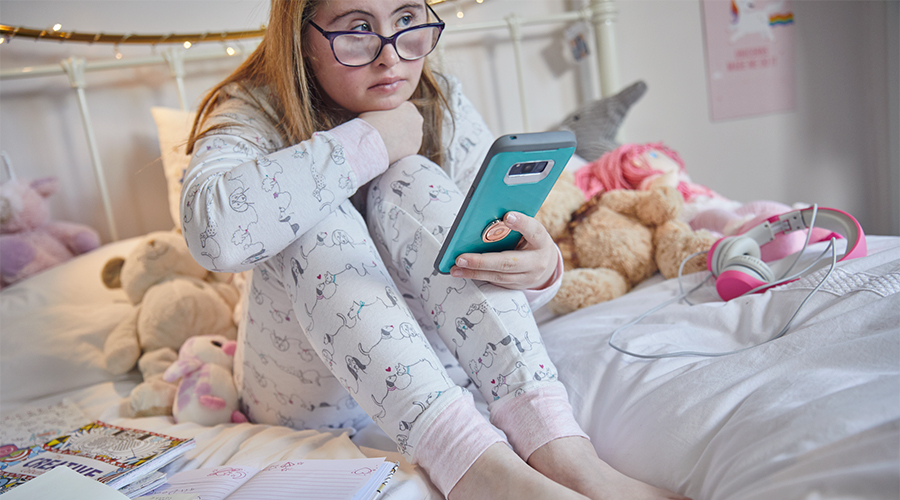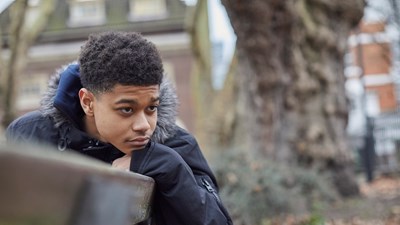New landmark data reveals young people who rely on social media, and who are unhappy, extroverted and lonely, are more exposed to online grooming1
 Our research has revealed for the first time how certain characteristics make children more vulnerable to being abused on social media.
Our research has revealed for the first time how certain characteristics make children more vulnerable to being abused on social media.
Abusers will often target children who've expressed vulnerability online, mainly through sharing thoughts and feelings in social media posts and livestreams, which many children are likely to be doing now.
We surveyed 2,000 young people, aged between 11 and 17 and found that:
- 4% had sent, received or been asked to send sexual messages to an adult2
- this more than doubled to 9% for children who felt lonely, unhappy, were extroverted and who rely on social media3
- 9% of respondents had sent, received or been asked to send sexual messages to another young person, which more than doubled to 20% for those with the same vulnerable characteristics.
Self-generated images account for a growing proportion of child abuse images, whether these are shared consensually or are the result of peer-to-peer grooming.4 But if an image is shared, the sender loses control of how it’s used and it can lead to bullying, blackmail, online grooming and abuse.
Abuse can stop with a call to the NSPCC Helpline. Will you help us answer every call?
Heightened risk of sexual abuse during coronavirus lockdown
Childline counselling sessions have revealed young people are feeling lonely and anxious during lockdown and children are spending more time online to stay in touch with friends since schools have closed.
On top of that, tech firms are struggling to maintain content moderation, with fewer human resources available to identify and disrupt child abuse on their sites.
The NCA knows from online chats that offenders are discussing opportunities to abuse children during the crisis and Europol has seen a surge in attempts by offenders to contact young people on social media.
The threat of online grooming identified by this research underlines the urgent need for government to press ahead with an Online Harms Bill, which would place a legal Duty of Care on tech firms to tackle abuse. Find out how you can help make social media safer with our Wild West Web campaign.
Tips and advice to help cope with coronavirus (COVID-19)
Visit our coronavirus advice hub for tips and advice for parents and carers - from talking to a child worried about coronavirus to taking care of your mental health and much more.
Childline also has a huge online community where children can get support from their peers on message boards and use expert resources to help them through any issue they're worried about.
If adults are worried about children they can get advice on 0808 800 5000 or help@nspcc.org.uk.
Worried about a child?
Contact our child protection specialists for help, advice and support.
References
-
Respondents were asked to rate from one to five how happy they feel most of the time and were then asked to rate from one to five how much they agree with a series of statements about their personality. From these questions, a specific group was identified who are lonely, unhappy, extroverted, and have a greater reliance on social media. Children were then asked whether they had sent, received or been asked to send sexual messages to an adult or another young adult.
-
Sending receiving or being asked to send sexual messages by an adult are indicative of the different stages of grooming.
-
The IWF's annual report can be used as a source: Internet Watch Foundation (2019) Once upon a year: the Internet Watch Foundation annual report 2018
-
This research (Young People’s Experiences of Social Networking Sites) was commissioned by the NSPCC and conducted by Family Kids & Youth and consisted of 2,004 interviews of young people aged 11 to 17. Data is nationally representative and has been appropriately weighted for age, gender, ethnicity, socio-economic status and geographical location.




